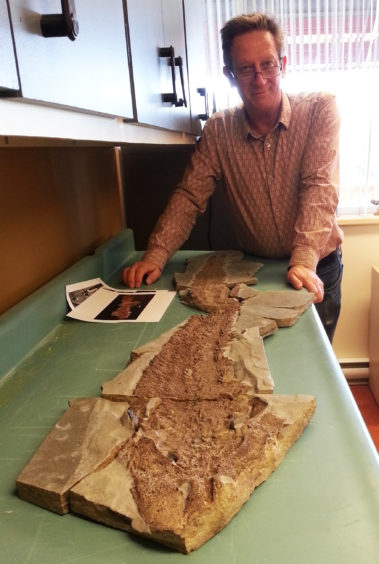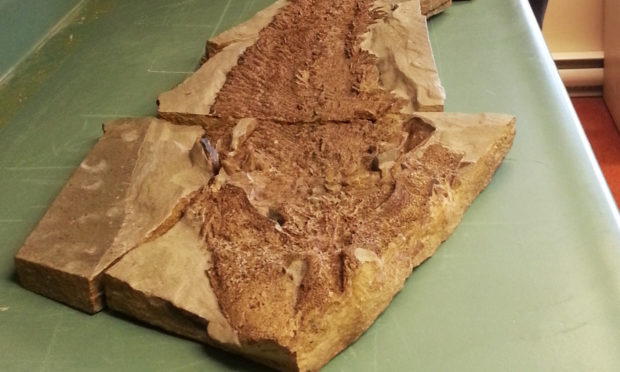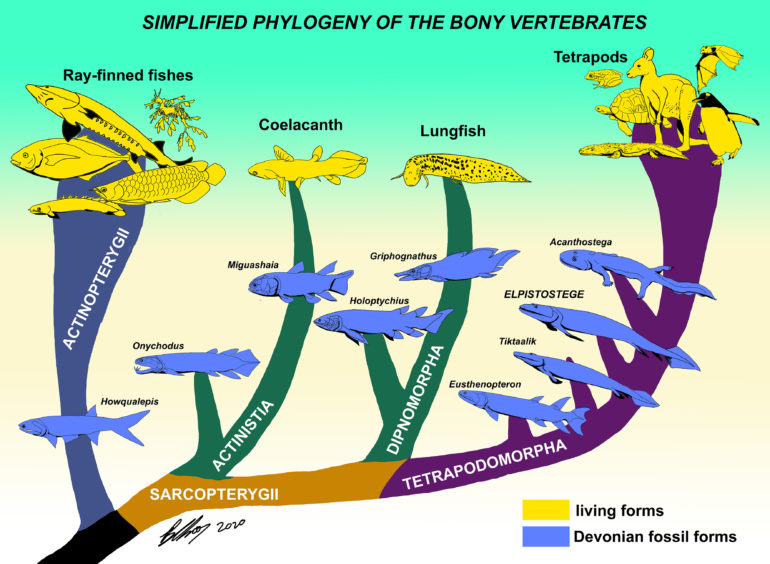An ancient fossil found in Canada has revealed new insights into how the human hand originally evolved from fish fins.
An international team of palaeontologists from Flinders University in Australia and Universite du Quebec a Rimouski in Canada have revealed the fish specimen, as described in the journal Nature, has yielded the missing evolutionary link in the fish-to-tetrapod transition during the Late Devonian period millions of years ago.

The complete 5.15-foot-long fish shows the complete arm (pectoral fin) skeleton for the first time in any elpistostegalian fish.
Using high energy CT-scans, the skeleton of the pectoral fin revealed the presence of a humerus (arm), radius and ulna (forearm), rows of carpus (wrist) and phalanges organised in digits (fingers).
Professor John Long of Flinders University, said: “Today, we announce our discovery of a complete specimen of a tetrapod-like fish, called Elpistostege, which reveals extraordinary new information about the evolution of the vertebrate hand.
“This is the first time that we have unequivocally discovered fingers locked in a fin with fin-rays in any known fish. The articulating digits in the fin are like the finger bones found in the hands of most animals.”
“This finding pushes back the origin of digits in vertebrates to the fish level, and tells us that the patterning for the vertebrate hand was first developed deep in evolution, just before fishes left the water.”
The evolution of fishes into tetrapods – four-legged vertebrates of which humans belong – was one of the most significant events in the history of life.
Vertebrates (back-boned animals) were then able to leave the water and thrive on land. But in order to complete this transition, one of the most significant changes was the evolution of hands and feet.
Palaeontologists studied the fossils of lobe-finned fish and tetrapods from the Middle and Upper Devonian (359-393 million years ago) known as ‘elpistostegalians’.
Co-author Richard Cloutier from Universite du Quebec a Rimouski said that, during the past decade, fossils had helped scientists to better understand anatomical transformations associated with breathing, hearing, and feeding, as the global habitat changed from water to land on Earth.
He added: “The origin of digits relates to developing the capability for fish to support its weight in shallow water or short trips on land. The increased number of small bones in the fin allows more planes of flexibility to spread out its weight through the fin.
“Elpistostege is not necessarily our ancestor, but it is the closest we can get to a true ‘transitional fossil’, an intermediate between fishes and tetrapods.”

